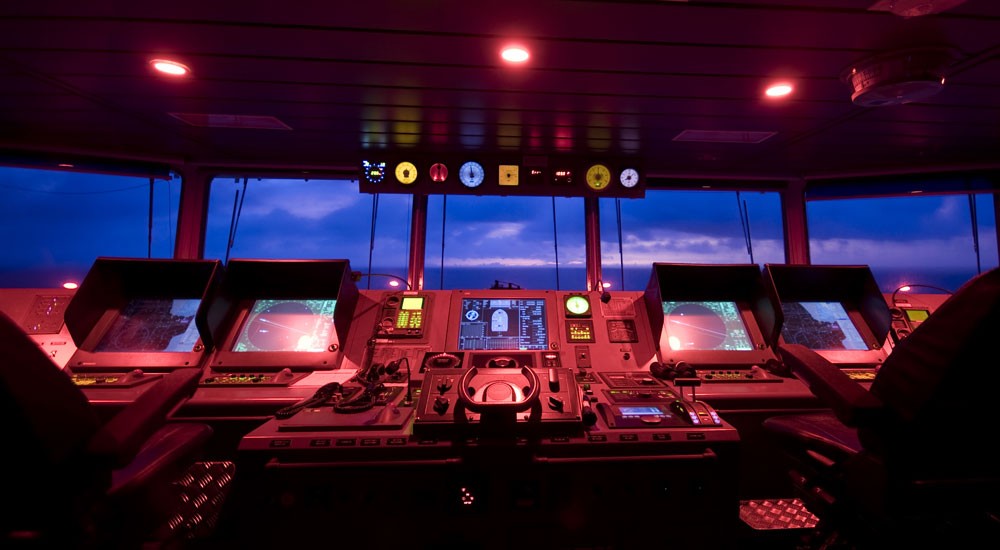What is Ship Performance Monitoring?
In a general sense, ship performance monitoring involves the regular collection of data (usually from a vast array of sensors) as part of an assessment of the performance of your ship or fleet. For any ship manufacturer or fleet manager, at least some small measure of ship performance monitoring is always in place. You check to make sure the ship runs, after all, and you likely also analyze other aspects of its performance, like how well the engine is running, how fuel-efficient the fleet is, and more.
This general, day-to-day measuring of your fleet’s performance is integral to ensuring your ships are up to their daily tasks. An important addition to these measurements is that of shaft power.
That’s where marine shaft power meters come in. By using shaft power meters to measure data points like torque and shaft horsepower, you gain insight into your ship’s performance that enables you to improve operations significantly. By implementing shaft power meters into your performance monitoring suite, it will help you predict downtime, analyze sub-optimal sailing habits, or identify areas to improve fuel efficiency.
How Marine Shaft Power Meters Improve Ship Performance Monitoring
Marine shaft power meters offer another level of ship performance monitoring, specifically by providing an accurate measurement of horsepower that does not require shaft modification or disassembly. As with other performance monitoring sensors, this data allows you not just to react to poor performance, but to anticipate and avoid it. When you understand how your vessels are performing and can see at a glance when your engine performance starts to deteriorate, you can stay out in front of potential failures, and optimize your fleet for more efficient performance at all times. Let’s take a look at a few of the ways marine shaft power meters can improve ship performance monitoring:
Diagnostics and Testing
A marine shaft power meter measures the torque, speed, and power of a propeller shaft. These three values are important to understanding the performance of any ship, and specifically allow you to:
- Diagnose propulsion problems as they occur. When horsepower reading from the engine doesn’t match the real horsepower reading as indicated by the torque meter, this is indicative of a problem.
- Identify causes of excessive torsional vibration on a propeller shaft
- Figure out when hull efficiency has degraded
One great example of the diagnostic capabilities a marine shaft power meter can provide comes in the detection of hull fouling.

Hull fouling is the buildup of organisms on an engine hull. Hull fouling leads to increased drag on the hull, which causes the vessel to lose fuel efficiency. When using a shaft power meter, you can compare the true output power of your engines to a calibrated baseline of the ship in un-fouled state, enabling you to identify when excessive drag is prevalent and indicating potential hull fouling. (Check out this case study to see how a TorqueTrak Revolution was used for this purpose)
Reduce Downtime
When it comes to marine applications, time is money. Any time a vessel is down, your company is losing money. By implementing a marine shaft power meter, you increase your capabilities to predict and even completely avoid vessel downtime. Here are a couple ways this works:
Predictive Ship Performance Monitoring
Ship performance monitoring completed with a marine shaft power meter gives you a baseline horsepower to work from. When you’re constantly monitoring your engine performance, you have data that tells you how the ship should be operating in normal conditions. When conditions change, the power meter will respond to these changes. Accurate torque/power measurements, directly from the shaft, highlight when engine, propeller, gearbox, or bearing performance begins to degrade, giving you the opportunity to address the problem before downtime occurs.
Preventative Maintenance
What’s more, this type of ship performance monitoring also provides the opportunity to implement proactive preventative maintenance, and avoid the unnecessary replacement of worn components. You can see exactly when a part begins to fail, and replace it just in time. This also helps avoid unnecessary part replacements. Instead of replacing vessel parts on an arbitrary schedule, you’ll have the data you need to assess whether those parts are really ready for replacement, or if they still have life left in them.
Optimize Fuel Efficiency and Reduce Emissions
Fuel efficiency is a primary concern in the marine industry. Fuel consumption is the highest operating cost, skyrocketing above maintenance costs and even crew wages. The more fuel-efficient your ships and your fleet, the lower your operating costs and the more profitable your business. For massive vessels, even small changes in operation can reap large rewards when it comes to fuel efficiency.
Using a marine shaft power meter, you are able to combine mechanical horsepower measurements with vessel speed and fuel consumption sensors to monitor fuel consumption and increase fuel efficiency.

Marine shaft power meters offer significantly higher accuracy with horsepower measurements than the default engine readings provided by the engine manufacturer. This means you can monitor key performance indicators such as the Specific Fuel Oil Consumption (SFOC) more accurately. More accurate data means higher efficiency gains, lower fuel costs and reduced emissions.
Continuous ship performance monitoring also offers the long-term data you need to understand sailing habits and how they’re affecting fuel efficiency. For example, rushing to the harbor only to wait for several hours until the ship is allowed to berth is a sub-optimal sailing habit that wastes fuel. When you’re collecting many data points on your ships every day, you have the information you need to identify these trends and make adjustments for optimization. The added benefit here is that in optimizing your fuel efficiency, you are also better able to meet fuel emission requirements.
No matter your marine industry application, marine shaft power meters can take your ship performance monitoring to the next level, helping you improve operations, improve fuel efficiency, and stay on top of maintenance and equipment degradation. For more information about marine power shaft meters or monitoring ship performance, talk to the experts at Binsfeld Engineering. Our TorqueTrak products can provide the accurate, reliable data you need to help reduce downtime and increase operational efficiency.


